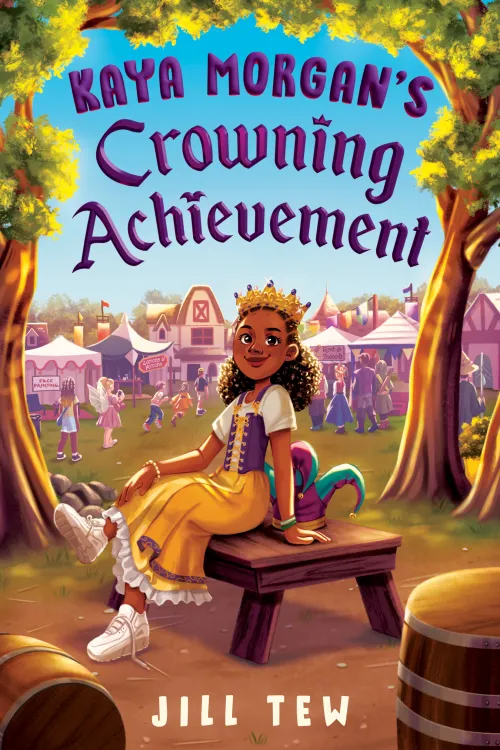Share this book
After reading Kaya Morgan’s Crowning Achievement, guide students in exploring the historical and theatrical traditions behind Renaissance Faires so that they can create their own “Ren Faire!” Talk about the different experiences Kaya had and discuss how ren faires blend history and fantasy, with performance playing a central role.
As storytelling plays a big part in both the Renaissance and Renaissance Faires, students need to develop their own Renaissance character—complete with backstory. Researching the Renaissance period and getting an understanding of the culture, history, fashion, and occupations of the time will help students create more authentic and interesting characters. Ask students to learn something that their character would know how to do—such as calligraphy, writing and performing a short poem or song, or creating a handicraft—and be prepared to present it in character.
If materials are available, students should also design and create costumes to wear before setting up booths where they can share their story, demonstrate their skills, exhibit their crafts, and interact with others in character.
Questions for Discussion or Reflective Writing
- How does Kaya feel about the Faire? Why is she so determined to become Queen? What does Kaya gain from being at the Faire’s summer camp and how does that change her perceptions of the Faire?
- How does Kaya feel about being assigned the role of court jester? What does that role represent to her, and how does her understanding of it change? Think about a time you’ve had to change plans or direction. What did you discover about yourself?
- How does Kaya’s relationship with her dad shape her actions at the Faire? Where in the story do you see her grief affecting her decisions?
- What did Kev Jr. warn Kaya to be careful about? What do you think of the “expectations” Zach is trying to meet?
- Queen Daphne tells Kaya that “a good queen knows her strongest asset is her relationships.” Why is this something Kaya needs to hear? How does collaboration with others change Kaya’s approach to winning the crown? What does she learn about teamwork?
- What examples of discrimination, racism, or racial privilege did you identify in the book? Have you ever experienced anything that you identified from the book? How did it make you feel?
- How does Kaya’s idea of a “crowning achievement” evolve?
Related Resources
Renaissance Era: A Resource Guide from the Library of Congress
Creating Your Renaissance Character from the Central Coast Renaissance Festival
Planning a Renaissance Fair: 9 Must-Haves from Passage
Behind the castle doors, a crew of Renaissance fair workers find family amid the fantasy from PBS NewsHour
More Titles to Try
Stay on top of current education news


